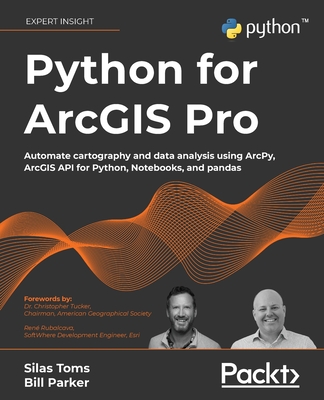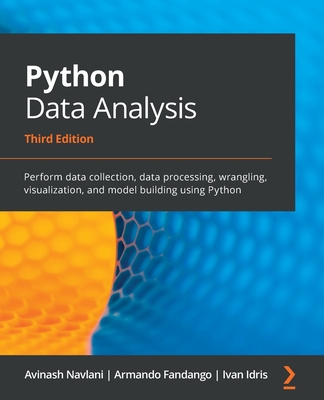Pandas for Everyone: Python Data Analysis (Addison-Wesley Data & Analytics Series)
暫譯: 人人都能使用Pandas:Python數據分析(艾迪森-韋斯利數據與分析系列)
Daniel Y. Chen
- 出版商: Addison Wesley
- 出版日期: 2017-12-26
- 定價: $1,560
- 售價: 8.0 折 $1,248
- 語言: 英文
- 頁數: 412
- 裝訂: Paperback
- ISBN: 0134546938
- ISBN-13: 9780134546933
-
相關分類:
Python
-
相關翻譯:
Python數據分析 活用Pandas庫 (簡中版)
-
其他版本:
Pandas for Everyone: Python Data Analysis (Paperback)
買這商品的人也買了...
-
 SELinux: NSA's Open Source Security Enhanced Linux (Paperback)
SELinux: NSA's Open Source Security Enhanced Linux (Paperback)$1,490$1,416 -
 Python for Finance (Paperback)
Python for Finance (Paperback)$1,640$1,558 -
 精通 Python|運用簡單的套件進行現代運算 (Introducing Python: Modern Computing in Simple Packages)
精通 Python|運用簡單的套件進行現代運算 (Introducing Python: Modern Computing in Simple Packages)$780$616 -
 $1,575Git for Teams: A User-Centered Approach to Creating Efficient Workflows in Git (Paperback)
$1,575Git for Teams: A User-Centered Approach to Creating Efficient Workflows in Git (Paperback) -
 Data Wrangling with Python: Tips and Tools to Make Your Life Easier (Paperback)
Data Wrangling with Python: Tips and Tools to Make Your Life Easier (Paperback)$1,663$1,575 -
 $234ZigBee 技術開發 — Z-Stack 協議棧原理及應用
$234ZigBee 技術開發 — Z-Stack 協議棧原理及應用 -
 $990Hands-On Machine Learning with Scikit-Learn and TensorFlow (Paperback)
$990Hands-On Machine Learning with Scikit-Learn and TensorFlow (Paperback) -
 資料結構 -- 使用 Python
資料結構 -- 使用 Python$520$411 -
 $857深度學習
$857深度學習 -
 $474OpenStack 高可用集群 (下冊):部署與運維
$474OpenStack 高可用集群 (下冊):部署與運維 -
 駭客的修練|使用 IDA Pro 進行底層分析, 2/e
駭客的修練|使用 IDA Pro 進行底層分析, 2/e$480$379 -
 Neo4j 圖形資料庫權威指南 -- 傲視大數據時代的先端利器
Neo4j 圖形資料庫權威指南 -- 傲視大數據時代的先端利器$650$553 -
 MIS 一定要懂的 82個網路技術知識
MIS 一定要懂的 82個網路技術知識$360$306 -
 $2,070Machine Learning with Python Cookbook: Practical Solutions from Preprocessing to Deep Learning
$2,070Machine Learning with Python Cookbook: Practical Solutions from Preprocessing to Deep Learning -
 文科生也看得懂的資料科學
文科生也看得懂的資料科學$380$300 -
 優雅的 SciPy|Python 科學研究的美學 (Elegant SciPy: The Art of Scientific Python)
優雅的 SciPy|Python 科學研究的美學 (Elegant SciPy: The Art of Scientific Python)$580$458 -
 $374Python 絕技 : 運用 Python 成為頂級數據工程師
$374Python 絕技 : 運用 Python 成為頂級數據工程師 -
 $474Python 數據分析 : 基於 Plotly 的動態可視化繪圖
$474Python 數據分析 : 基於 Plotly 的動態可視化繪圖 -
 $301Python 數據可視化之 matplotlib 實踐
$301Python 數據可視化之 matplotlib 實踐 -
 一直學不會 Tensorflow? PyTorch 更好用更強大更易懂!
一直學不會 Tensorflow? PyTorch 更好用更強大更易懂!$540$459 -
 Hands-On Data Visualization with Bokeh: Interactive web plotting for Python using Bokeh
Hands-On Data Visualization with Bokeh: Interactive web plotting for Python using Bokeh$1,050$998 -
 AI 時代在網頁上資料視覺化:D3.js 實作寶典
AI 時代在網頁上資料視覺化:D3.js 實作寶典$540$459 -
 Starting Out with Python, 4/e (GE-Paperback)
Starting Out with Python, 4/e (GE-Paperback)$1,550$1,519 -
 駭客的 Linux 基礎入門必修課 (Linux Basics for Hackers: Getting Started with Networking, Scripting, and Security in Kali)
駭客的 Linux 基礎入門必修課 (Linux Basics for Hackers: Getting Started with Networking, Scripting, and Security in Kali)$420$357 -
 JavaScript 技術手冊
JavaScript 技術手冊$560$476
相關主題
商品描述
This tutorial teaches everything you need to get started with Python programming for the fast-growing field of data analysis. Daniel Chen tightly links each new concept with easy-to-apply, relevant examples from modern data analysis.
Unlike other beginner's books, this guide helps today's newcomers learn both Python and its popular Pandas data science toolset in the context of tasks they'll really want to perform. Following the proven Software Carpentry approach to teaching programming, Chen introduces each concept with a simple motivating example, slowly offering deeper insights and expanding your ability to handle concrete tasks.
Each chapter is illuminated with a concept map: an intuitive visual index of what you'll learn -- and an easy way to refer back to what you've already learned. An extensive set of easy-to-read appendices help you fill knowledge gaps wherever they may exist. Coverage includes:
-
Setting up your Python and Pandas environment
-
Getting started with Pandas dataframes
-
Using dataframes to calculate and perform basic statistical tasks
-
Plotting in Matplotlib
-
Cleaning data, reshaping dataframes, handling missing values, working with dates, and more
-
Building basic data analytics models
-
Applying machine learning techniques: both supervised and unsupervised
-
Creating reproducible documents using literate programming techniques
商品描述(中文翻譯)
這個教程教你所有需要的知識,以便在快速成長的數據分析領域開始使用 Python 程式設計。Daniel Chen 將每個新概念與現代數據分析中易於應用的相關範例緊密結合。
與其他初學者書籍不同,本指南幫助當今的新手在他們真正想要執行的任務背景下學習 Python 及其流行的 Pandas 數據科學工具集。根據經驗證的 Software Carpentry 教學方法,Chen 以簡單的激勵範例介紹每個概念,逐步提供更深入的見解,擴展你處理具體任務的能力。
每一章都配有概念圖:這是一個直觀的視覺索引,顯示你將學習的內容,並且是一個方便的方式來回顧你已經學過的知識。一套廣泛的易讀附錄幫助你填補任何知識空白。內容包括:
- 設置你的 Python 和 Pandas 環境
- 開始使用 Pandas 數據框
- 使用數據框計算和執行基本統計任務
- 在 Matplotlib 中繪圖
- 整理數據、重塑數據框、處理缺失值、處理日期等
- 建立基本的數據分析模型
- 應用機器學習技術:包括監督式和非監督式
- 使用文學編程技術創建可重現的文檔
















